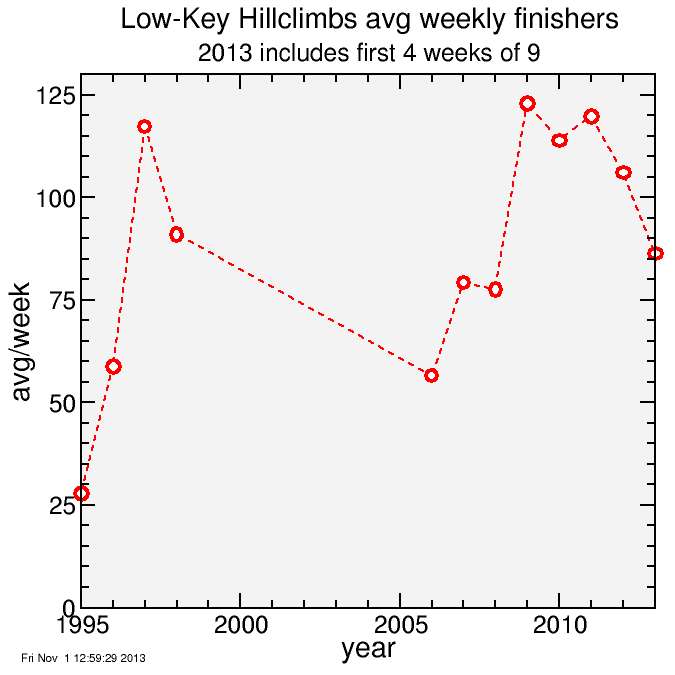Low-Key Hillclimbs: trends in rider turn-out
As we head into week 5 of the 2013 Low-Key Hillclimbs, the trend has been unambiguous: despite excellent weather, rider counts are down since last year. The climbs are just as good as ever, although perhaps so far on the challenging side. Still, comparing the same climb year to year the conclusion is the same. And with SRAM leading the way first with compact drivetrains and then with wide-range rear cassettes, riders on "racing bikes" have access to lower gears than ever before, making the steep roads less intimidating.
I plot the trend here. 1995-1997 it became more popular and then peaked, dropping off in 1998 when the series took a break. It came back in 2006 and had to rebuild a following almost from scratch. 2006-2010 There's a clear peak 2006-2009 was a period of rapid growth, but then it saturated, with a clear drop-off in 2012 which has accelerated this year.

One hit for 2012-2013 has been the "GPS-timed climbs." These have a lower turn-out than the group events. I understand that, but the GPS timing lets us do climbs which would otherwise be out of reach. And total numbers have bever been the primary goal. For example, if I do a GPS timed event like Portola Valley Hills with 69 riders instead of for example Page Mill Road which might have gotten 120, that's 51 riders less over 4 weeks so far which is 13 riders per week hit on the average. But still that would take 2013 only from 86 to 99.
Honestly the smaller numbers are a bit easier to handle, so I'm not complaining. Although of course one wants something on which puts in so much time to be popular. We've gotten plenty of positive feedback, so that leads me to believe it's due to general trends in cycling, with newer riders more attracted to cyclocross in fall, a sport which has grown enormously in popularity the past ten years.
The series won't go on forever, of course. When it's done I'm sure we'll look back to 2013 as a good year.

Comments